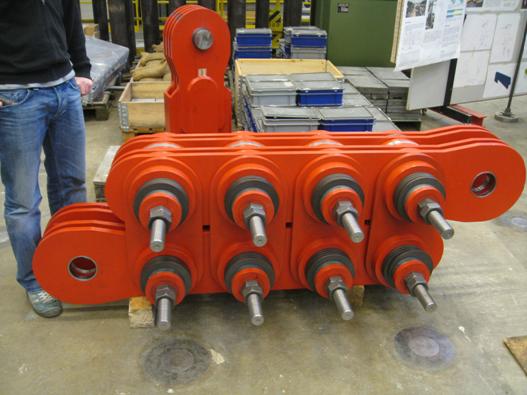In earthquake-prone regions, protecting buildings and residents from seismic forces is of utmost importance. Engineers and researchers have developed a number of innovative technologies to improve earthquake safety. One such technology is sliding friction dampers.
In this article, we look at sliding friction dampers and examine how they work, their applications, and the important role they play in protecting buildings and infrastructure during earthquakes.
Understanding Sliding Friction Dampers
Sliding friction dampers, also called sliding friction dampers or simply friction dampers, are passive energy dissipation devices designed to reduce the structural response of buildings and bridges to seismic forces.
They work on the principle of frictional resistance and convert the kinetic energy created by an earthquake into heat through a controlled sliding movement.
The main purposes of sliding friction dampers are:
- Energy Dissipation : To dissipate seismic energy and reduce the amplitude of vibrations within a structure.
- Pendulum control : To limit sway or lateral displacement of the building and prevent excessive movement that could endanger occupants or result in structural damage.
Principles of Sliding Friction Dampers
Friction dampers work on the principle of using friction to dissipate kinetic energy. They typically consist of the following components:
- Sliding interfaces : These interfaces are often made from high-friction materials such as steel plates or specially designed friction pads. They are strategically placed on the structure to allow controlled sliding or relative movement.
- Compression Springs : These springs provide the force necessary to keep the sliding surfaces in contact during normal building operation. They ensure that the dampers remain engaged when seismic forces are not present.
- Adjusting damping force : The damping force of sliding friction dampers can be adjusted by varying the coefficient of friction, the number of dampers installed, or the preload of compression springs.


Image source: Damptech
Sliding Friction Damper Applications
Sliding friction dampers are used in several types of structures, including:
1. Building:
Sliding friction dampers are often used both in new construction and in the modernization of existing buildings to improve their earthquake resistance. They can be installed in various locations, such as between floors, on support struts or at the base of a building.
2. Bridges:
Bridges and viaducts benefit from sliding friction dampers, especially in regions with high seismic activity. These dampers help control the movement of the bridge during an earthquake, reducing structural damage and further ensuring functionality.
3. Industrial facilities:
In critical industrial facilities such as factories and warehouses, sliding friction dampers are used to prevent the loss of equipment and inventory during earthquakes.
4. Historic buildings:
Sliding friction dampers can be discreetly integrated into historic buildings to improve their seismic resistance while preserving their architectural integrity.
Advantages of Sliding Friction Dampers
Sliding friction dampers offer several advantages in earthquake-resistant construction:
- Passive operation:
They do not require external power supply or active control systems and are therefore reliable and economical.
- Minimum maintenance:
Compared to other seismic retrofit technologies, sliding friction dampers require little maintenance.
- Adjustable Damping:
The damping force of sliding friction dampers can be adjusted to specific structural requirements, providing design flexibility.
- Modernization options:
They can be retrofitted into existing structures to improve their earthquake resistance without significant alterations.
Challenges and Considerations
Although sliding friction dampers are effective, several challenges and considerations must be taken into account:
- Temperature effects : Extreme temperatures can affect the friction properties of shock absorbers, potentially affecting their performance.
- Design Accuracy : Precise design and analysis are required to ensure that sliding friction dampers are sized and placed correctly for each structure.
- Maintenance planning : To guarantee the full functioning of the shock absorbers, regular checks and maintenance are necessary.
- Compatibility : Sliding friction dampers must be compatible with the overall structure and architectural design of the building.
Friction dampers are a valuable tool in constructing earthquake-resistant buildings. By dissipating seismic energy and controlling building vibration, these passive devices play an important role in protecting buildings and their occupants during earthquakes.
As the development of earthquake engineering technologies advances, sliding friction dampers, among other innovations, are helping to create resilient and safe building environments in earthquake-prone regions.

